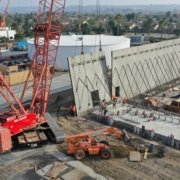Small Towns Grow Desperate for Water in California
As a measure of both the nation’s creaking infrastructure and the severity of the drought gripping California there is the $5 shower.
That’s how much Ian Roth, the owner of the Seagull Inn, a bed-and-breakfast in this tourist town three hours north of San Francisco, spends on water every time a guest washes for five minutes under the shower nozzle.
Water is so scarce in Mendocino, an Instagram-ready collection of pastel Victorian homes on the edge of the Pacific, that restaurants have closed their restrooms to guests, pointing them instead to portable toilets on the sidewalk.











